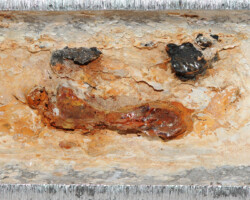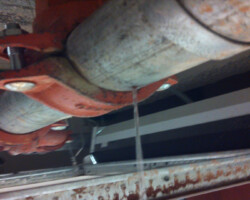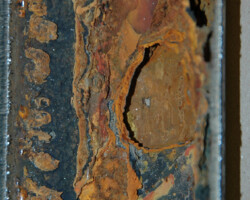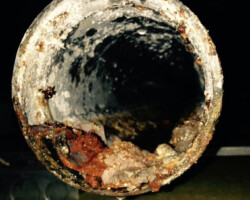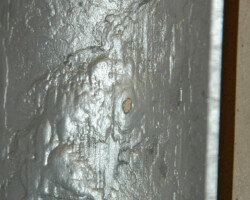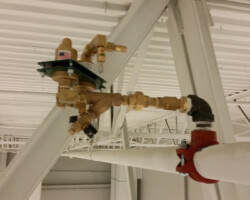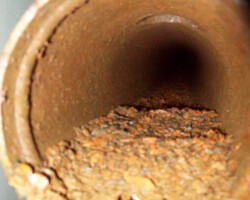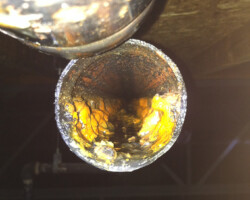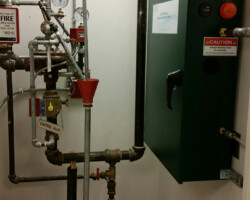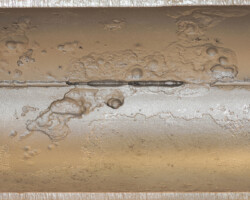Fire Protection Service FAQ’s
Residential And Commercial Fire Sprinklers, Fire Sprinkler Installation, Confidence Testing, Maintenance, And Service In Seattle, WA.
For your convenience, we would like to provide some answers to some frequently asked questions about fire sprinkler system service and repair throughout Seattle WA. If you don’t see an answer to your question, please feel free to contact us. We will be more than happy to provide you with an answer.
SEE OUR MOST FREQUENTLY ASKED QUESTIONS BELOW
Q.
What is a Wet Pipe Fire Sprinkler System?
A.
By a wide margin, wet pipe sprinkler systems are installed more often than all other types of fire sprinkler system service and repair in Seattle, WA. They are also the most reliable because they are simple, with the only operating components being the automatic sprinklers and (commonly, but not always) the automatic alarm check valve. An automatic water supply provides water under pressure to the system piping.
Operation – When an automatic sprinkler is exposed for a sufficient time to a temperature at or above the temperature rating, the heat sensitive element (glass bulb or fusible link) releases, allowing water to flow from that sprinkler.
Q.
What is a Dry Pipe Fire Sprinkler System?
A.
Dry pipe systems are installed in spaces in which the ambient temperature may be cold enough to freeze the water in a wet pipe system, rendering the system inoperable. Dry pipe systems are most often used in unheated buildings, in parking garages, in outside canopies attached to heated buildings (in which a wet pipe system would be provided), or in refrigerated coolers. Dry pipe systems are the second most common sprinkler system type. In regions using NFPA regulations, dry pipe systems cannot be installed unless the range of ambient temperatures reaches below 40F.
Operation – Water is not present in the piping until the system operates. The piping is filled with air below the water supply pressure. To prevent the larger water supply pressure from forcing water into the piping, the design of the dry pipe valve (a specialized type of check valve) results in a greater force on top of the check valve clapper by the use of a larger valve clapper area exposed to the piping air pressure, as compared to the higher water pressure but smaller clapper surface area.
When one or more of the automatic sprinklers is exposed to for a sufficient time to a temperature at or above temperature rating, it opens, allowing the air in the piping to vent from that sprinkler. Each sprinkler operates individually. As the air pressure in the piping drops, the pressure differential across the dry pipe valve changes, allowing water to enter the piping system. Water flow from sprinklers needed to control the fire is delayed until the air is vented from the sprinklers. For this reason, dry pipe systems are usually not as effective as wet pipe systems in fire control during the initial stages of the fire.
Some view dry pipe sprinklers as advantageous for protection of collections and other water-sensitive areas. This perceived benefit is due to a fear that wet system piping may leak, while dry pipe systems will not. However, the same potential for accidental water damage exists, as dry pipe systems will only provide a slight delay prior to water discharge while the air in the piping is released from the pipe.
Q.
What is a Deluge Fire Sprinkler System?
A.
Info coming soon!
Q.
What is a Pre-action Fire Sprinkler System?
A.
Pre-action sprinkler systems are specialized for use in locations where accidental activation is undesired, such as in museums with rare artworks, manuscripts, or books; and Data Centers, for protection of computer equipment from accidental water discharge.
Pre-action systems are hybrids of wet and dry systems, depending on the exact system goal. There are two main sub-types of pre-action systems: single interlock, and double interlock.
The operation of single interlock systems is similar to that of dry systems, except that these systems require that a “preceding” fire detection event, typically the activation of a heat or smoke detector, takes place prior to the “action” of water introduction into the system’s piping by opening the pre-action valve, which is a mechanically latched valve (i.e., similar to a deluge valve). In this way, the system is essentially converted from a dry system into a wet system. The intent is to reduce the undesirable time delay of water delivery to sprinklers that is inherent in dry systems. Prior to fire detection, if the sprinkler operates, or the piping system develops a leak, loss of air pressure in the piping will activate a trouble alarm. In this case, the pre-action valve will not open due to loss of supervisory pressure, and water will not enter the piping.
The operation of double interlock systems is similar to deluge systems except that automatic sprinklers are used. These systems require that both a “preceding” fire detection event, typically the activation of a heat or smoke detector, and an automatic sprinkler operation take place prior to the “action” of water introduction into the system’s piping. Activation of either the fire detectors alone, or sprinklers alone, without the concurrent operation of the other, will not allow water to enter the piping. Because water does not enter the piping until a sprinkler operates, double interlock systems are considered as dry systems in terms of water delivery times, and similarly require a larger design area.
Q.
What is a Foam Water Fire Sprinkler System?
A.
A foam water fire sprinkler system is a special application system, discharging a mixture of water and low expansion foam concentrate, resulting in a foam spray from the sprinkler. These systems are usually used with special-hazard occupancies associated with high challenge fires, such as flammable liquids, and airport hangars. Operation is as described above, depending on the system type into which the foam is injected.
Q.
What is a Water Spray Fire Sprinkler System?
A.
“Water Spray” systems are operationally identical to a deluge system, but the piping and discharge nozzle spray patterns are designed to protect a uniquely configured hazard, usually being three dimensional components or equipment (i.e., as opposed to a deluge system, which is designed to cover the horizontal floor area of a room). The nozzles used may not be listed fire sprinklers, and are usually selected for a specific spray pattern to conform to the three-dimensional nature of the hazard (e.g., typical spray patterns being oval, fan, full circle, narrow jet). Examples of hazards protected by water spray systems are electrical transformers containing oil for cooling or turbine generator bearings. Water spray systems can also be used externally on the surfaces of tanks containing flammable liquids or gases (such as hydrogen). Here the water spray is intended to cool the tank and its contents to prevent tank rupture/explosion (BLEVE) and fire spread.
Q.
What Is Confidence Testing?
A.
The International Fire Code requires all building owners to be vigilant and aware of their fire safety systems, including the condition and performance ability. In order to ensure that the fire protection services are up to code, we strongly suggest performing regular confidence testing, which includes a professional to come in and thoroughly inspect the entirety of the system.
Q.
Why Are Commercial and Residential Fire Sprinkler Systems Important?
A.
The sprinkler systems you often see in businesses and homes are designed to help distinguish small fires, and control larger fires in the early stages. The fire sprinkler systems help to buy time for people to safely exit the premises and allow for the fire department to arrive before too much devastation occurs. Going forward with a fire sprinkler installation can not only save material items from a potential fire; it can save lives.


